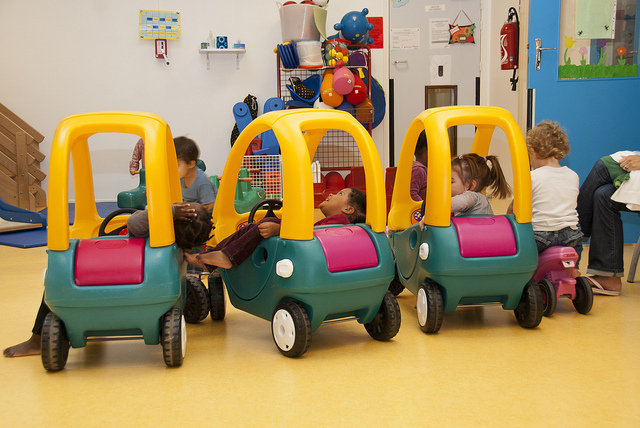
The algorithm for accessing child care

How matching theory, the study of supply and demand, could help secure your child a spot in child care
Published 31 May 2017
Child care is a major point of anxiety for many new parents. The chronic shortage of spots in major Australian cities, coupled with lengthy waiting lists, places enormous pressure on parents trying to access the essential service.
This competitive environment often results in parents applying to multiple centres in the hope of getting at least one offer – and if they’re lucky they might receive one.

But what if that centre isn’t the right choice for their child?
A recent report by the Productivity Commission shows many Australian parents will accept the first place that becomes available for fear of not getting a place at all.
But the Centre for Market Design (CMD) at the University of Melbourne believe there is a far easier solution to this onerous application process – and one that would benefit both parents and child care service providers.
Matching markets
Price plays a key role in economics - supply and demand are the driving forces. But not all markets should or do operate this way. In much the same way as you would find a job or a romantic partner, ‘matching markets’ are a two-way street; both parties need to agree. Matching theory, the study of these markets, has become an important field in economics and has many uses.
For example, over the past two decades economists have helped assign medical graduates to hospitals, kidney donors to recipients and military cadets to branches of the American army.
The CMD is currently working with the Victorian and Commonwealth governments to design several matching markets. One has already proved successful: matching graduates to positions within government departments. The two-way transaction sees both the employees and employers set their preferences, resulting in a quality match which saves both sides’ time and energy spent in a typical hiring process.
Mission impossible: securing a spot at child care
Matching theory has been used successfully in the United States and the United Kingdom to assign children to schools. Students rank schools in order of preference and are ranked by schools in order of priority, based on administrative criteria such as how far from the school each student lives or whether they have a sibling attending that school. Based on these factors as well as the capacity of each school, an algorithm allocates places.
The CMD is working with the Victorian Government on a project that could see similar techniques tailored to child care. If successful, this would potentially be the first matching market for child care in the world.
The model would ensure spots are allocated based on preference and objective criteria, rather than the game of wait-and-see that results from the current decentralised market.

However, developing a matching system for child care isn’t a straightforward process. Many children attend child care part-time which adds an extra layer of complexity to the model.
As a result, standard matching algorithms used in schools don’t perform well in the child care environment. My research is developing new tools that account for this key difference and could ultimately be used to allocate child care places.
New avenues for refugee resettlement
Beyond child care, this model can be extended to cover a raft of applications. In joint work with Scott Kominers from Harvard University and Alex Teytelboym from Oxford University, we hope to help tackle one of the world’s major immigration issues: refugee resettlement.
Compared to the ad hoc processes that currently exist in countries around the world, a rigorous approach to match refugees and communities would have significant advantages.

Previous research suggests refugees who start their new life in a community suited to them are more likely to achieve better education and employment outcomes.
But this is no easy feat. Like everyone, refugees have different hopes, aspirations and goals that require different services (housing, schooling, medical) that communities need to be able to provide. The local community may also express preferences. The idea has already sparked interest from a number of countries, including the UK, Canada and Sweden.
There are many more applications waiting to be discovered.
Though not a magic bullet, with social values front and centre, these modern matching techniques can only continue to gain traction.
Banner: Shutterstock
